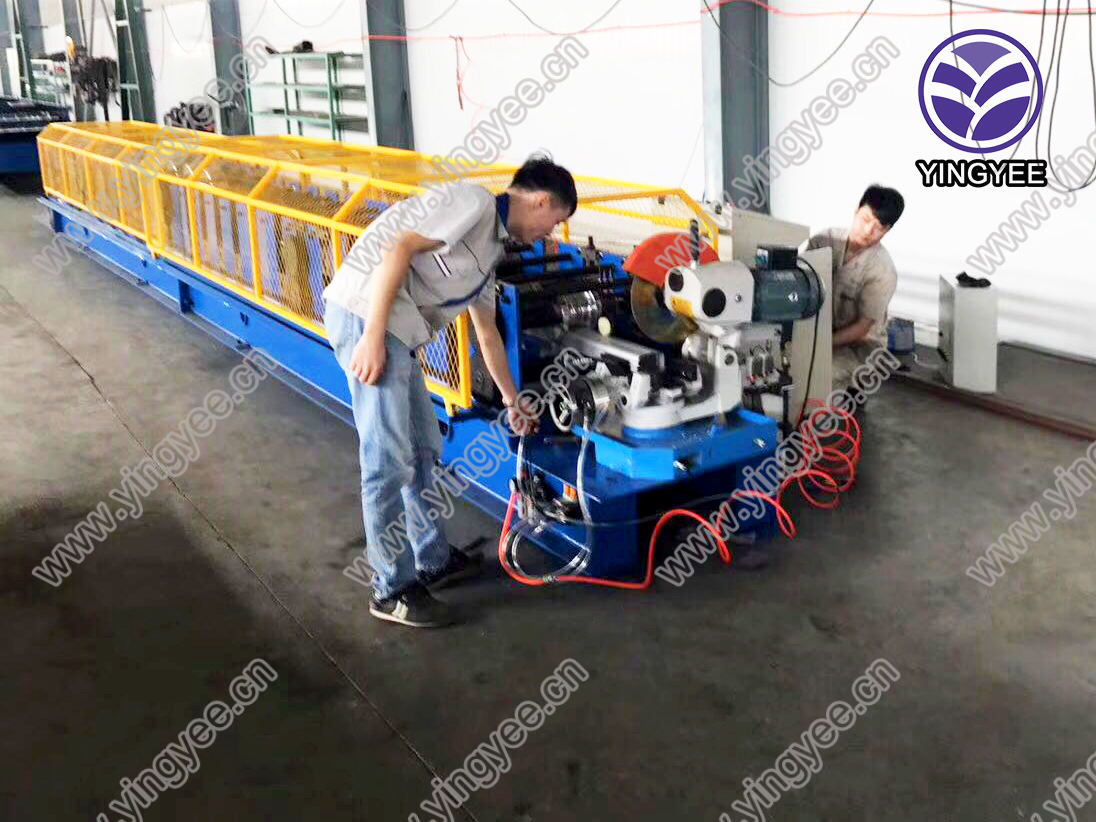
Understanding Corrugated Sheet Cold Roll Formers A Comprehensive Insight
In the world of modern manufacturing, the demand for efficient and precise production processes is ever-growing. Among the diverse machinery employed in production lines, the corrugated sheet cold roll former stands out as a crucial piece of equipment for industries dealing with metal sheets. This article delves into the significance, operation, and advantages of corrugated sheet cold roll formers, highlighting their role in enhancing operational efficiency.
What is a Corrugated Sheet Cold Roll Former?
A corrugated sheet cold roll former is a specialized machine designed to produce corrugated metal sheets from flat sheets of metal, typically steel or aluminum. The cold rolling process involves bending and shaping the metal at room temperature, which contrasts with hot rolling techniques requiring high heat. This machine employs a series of rollers configured in a way that gradually forms the metal into desired corrugated shapes.
Functionality and Design
The operation of a corrugated sheet cold roll former is a fascinating interplay of engineering and design. It begins with feeding flat metal sheets into the machine, where a series of rollers progressively shape the sheet into a corrugated form. Each roller has a specific profile, contributing to the precise angles and depths of the corrugation. The rollers are often arranged in a continuous lineup, allowing for seamless processing of longer metal sheets.
Moreover, advanced models of cold roll formers may include features like adjustable rollers, which enable manufacturers to change the corrugation profile on demand. This flexibility is particularly beneficial in industries that require varying specifications for different projects, ensuring that production remains adaptable and efficient.
Applications of Corrugated Sheets
Corrugated sheets produced by cold roll formers have a wide array of applications across various sectors. One of the most common uses is in the construction industry, where these sheets are employed for roofing, wall cladding, and siding. Their inherent strength and durability provide excellent protection against environmental factors, making them a popular choice for commercial and residential buildings alike.

In addition to construction, corrugated sheets find utility in manufacturing products like storage containers, shipping crates, and even decorative items. Their lightweight, yet robust structure makes them an ideal option where lightweight materials are necessary without sacrificing strength.
Advantages of Cold Rolling Processes
The cold rolling process carries several advantages over hot rolling techniques. Firstly, the cold rolling maintains the sheet's metal properties, resulting in a superior finish without the oxidation that often accompanies hot rolling. This property is especially important in industries where aesthetics and surface quality are critical, such as in architectural applications.
Furthermore, cold rolling can lead to increased yield strength and fatigue resistance, providing finished products that endure greater loads and stresses. This characteristic is advantageous in construction and industrial applications, where material performance is paramount.
Efficiency and Cost-Effectiveness
Investing in a corrugated sheet cold roll former can lead to significant cost savings and enhanced operational efficiency. The continuous production capability of these machines ensures a steady output, reducing downtime and labor costs. Additionally, the precision of the forming process minimizes material waste, further contributing to cost-effectiveness.
Conclusion
In summary, the corrugated sheet cold roll former serves as an invaluable asset in modern manufacturing processes. Its design and functionality enable the efficient production of corrugated sheets that meet the diverse needs of various industries. By understanding the operational advantages and applications of these machines, manufacturers can harness their capabilities to drive productivity and innovation in their respective fields. As technology continues to evolve, so too will the potential of cold roll forming, paving the way for even greater advancements in manufacturing efficiency.